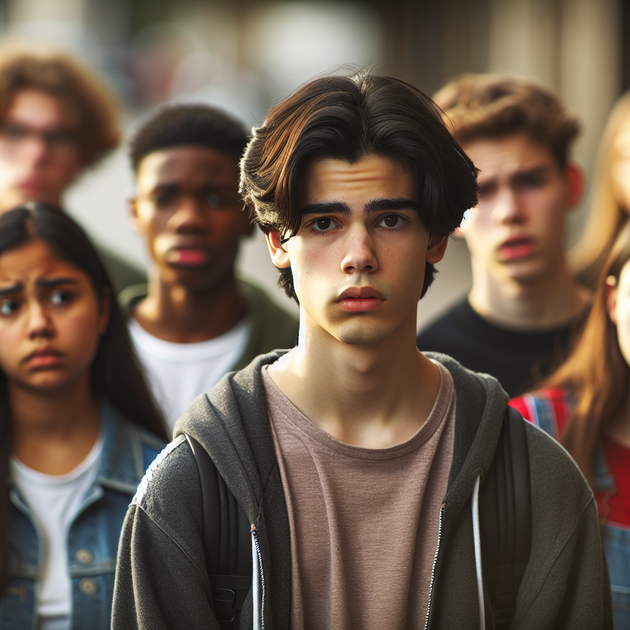Could regular marijuana use as a teenager make you more likely to experience things like paranoia or seeing things that aren’t there? Recent research says yes. Studies have found that cannabis use during adolescence and young adulthood is linked to more frequent “psychotic-like experiences”—unusual thoughts or perceptions that may resemble symptoms of psychosis but usually don’t reach the level of a diagnosable mental illness.
What Are Psychotic-Like Experiences?
Psychotic-like experiences are exactly what they sound like: feelings or perceptions that are similar to the symptoms seen in psychosis (like hallucinations or delusional thinking), but generally less severe and temporary. These might include:
- Feeling unusually suspicious or paranoid
- Hearing voices or seeing things that aren’t there (but knowing deep down they aren’t real)
- Believing others are out to get you, even without proof
- Thinking your thoughts are being controlled
- Feeling disconnected from reality for short periods
Most young people who have these kinds of experiences do not go on to develop a full-blown mental health disorder. But researchers believe that frequent psychotic-like episodes can be distressing and may signal an increased risk for future problems—especially when combined with other risk factors like family history or ongoing stress.
Why Is Cannabis Use During Adolescence Riskier?
The teenage brain is still developing well into the mid-20s. During this time, it’s especially sensitive to substances that affect the brain’s chemistry—like THC, the main psychoactive component of cannabis. According to the U.S. Centers for Disease Control and Prevention (CDC), using marijuana before age 18 can alter how connections form in the developing brain.
A number of studies have shown a stronger link between early and frequent cannabis use and these unusual psychological symptoms than among adults who start using later. A review published by the National Institute on Drug Abuse (NIDA) highlights that while not all teens who use marijuana will experience these effects, those who do may face higher risks if they start younger or use regularly.
How Common Are These Experiences?
Psychotic-like experiences aren’t rare among young people—even those who’ve never tried drugs. But studies consistently show that teens and young adults who use cannabis are more likely to report them than those who don’t. For instance:
- A study in JAMA Psychiatry found teens using cannabis had nearly double the odds of reporting psychotic-like symptoms compared to non-users.
- The risk increases with frequency—those using weekly or daily reported even higher rates.
- Younger age at first use also raises the likelihood of these experiences.
While these episodes often fade on their own, they can sometimes be frightening or disruptive enough for teens to seek help.
An Anecdote from Real Life
A college freshman once shared his story after experimenting with marijuana throughout high school. He described moments where he felt convinced everyone was talking about him behind his back—even close friends—or times he’d hear faint whispers when alone at night. “It was like my mind played tricks on me,” he said. While he never developed a serious mental illness, he eventually stopped using marijuana after realizing how much these episodes affected his mood and schoolwork.
Stories like this echo what research is finding—these temporary but unsettling sensations don’t always mean someone will develop long-term problems, but they’re often a wake-up call for paying closer attention to mental health.
What Should Parents and Teens Know?
Here’s a quick rundown of key points:
- Cannabis isn’t harmless—especially for teenagers.
- The earlier someone starts using it regularly, the higher their risk for psychotic-like symptoms.
- Most teens won’t develop lasting problems from occasional weird thoughts—but regular episodes shouldn’t be ignored.
- If you or someone you know feels distressed by these experiences (whether using cannabis or not), reaching out to a healthcare provider can help clear up what’s happening.
- Talking openly about drug use—and its real risks—can help families make informed choices together.
For more information on how marijuana affects young people’s brains and mental health, you can check out resources from the Substance Abuse and Mental Health Services Administration (SAMHSA).
Cannabis legalization has made conversations around youth drug use even more important. While marijuana has potential medical uses for adults under professional guidance (Mayo Clinic), its effects on developing brains still raise concerns.
Final Thoughts—And Your Perspective?
With growing access to marijuana products—and changing attitudes toward their safety—it’s easy for teens (and parents) to overlook possible risks like increased psychotic-like experiences. More research is still needed on exactly why some young people are affected more than others.
What do you think? Should schools spend more time talking about the mental health effects of teen drug use—not just physical risks? Share your thoughts below!

Leave a Reply